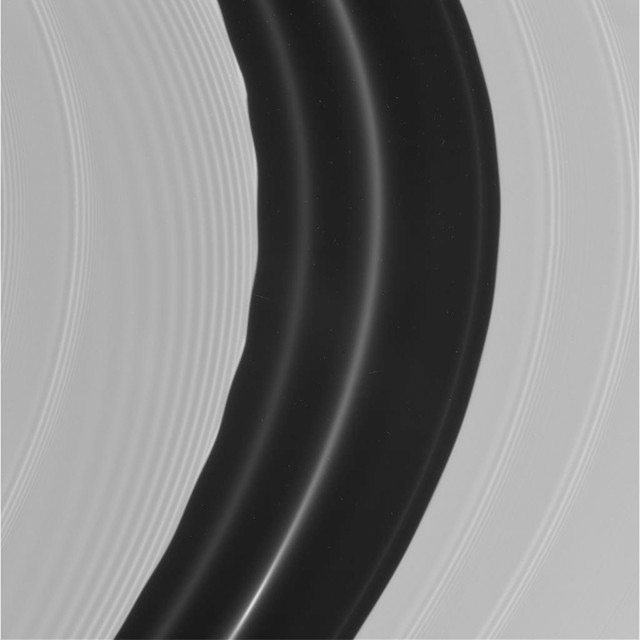
by Erin Wayman Tuesday, June 21, 2016

Keeler was the first to observe the Encke Gap, a 325-kilometer-wide space in Saturn's A Ring, the planet's outermost large ring. Credit: NASA/JPL/Space Science Institute.
James Edward Keeler’s work didn’t end all speculation about Saturn’s rings. For example, scientists still don’t know when they formed, but researchers are getting closer to understanding how they came to be.
In 1849, French astronomer and mathematician Edouard Roche suggested Saturn’s rings formed when an icy moon got too close to Saturn and was destroyed by tidal forces (the minimum distance at which this would happen is called the Roche limit). Last December, Robin Canup, an astrophysicist at the Southwest Research Institute in Colorado, presented a model in Nature that described how this may have happened.
A moon the size of Titan — with a water-ice mantle and a silicate-and-iron core — may have migrated too close to Saturn. As the moon approached Saturn’s Roche limit, tidal forces would have stripped away the moon’s frigid mantle, creating the chunks of ice that now orbit Saturn. The moon’s core would have then crashed into the planet. This scenario, Canup wrote, explains why the rings are almost pure water-ice.
The model indicates that the breakup of the moon would have created rings that were 1,000 times more massive than Saturn’s present rings. Canup noted that the icy bits in the outermost rings, beyond the Roche limit, may have given rise to some of Saturn’s small, icy moons.
© 2008-2021. All rights reserved. Any copying, redistribution or retransmission of any of the contents of this service without the expressed written permission of the American Geosciences Institute is expressly prohibited. Click here for all copyright requests.